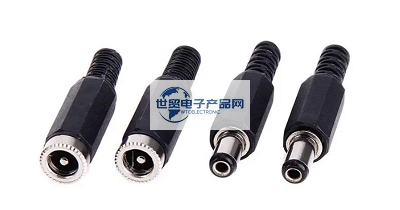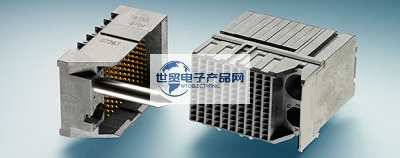Categorization:Product Information
With the rapid development of electronic communication technology, the packaging of integrated circuits is interconnected with the board, which requires higher and higher bandwidth of signal transmission. At the same time, the transmission rate of interconnected channels is getting faster and faster, and the decision time window of logic gates is getting smaller and smaller. Therefore, the development of information technology directly leads to the development of integrated circuit packaging, transmission lines and connections in interconnection channels from the initial "lumped parameter model" to the "distributed parameter model". Compared with the packaging of integrated circuits, the transmission lines and connectors on printed circuit boards are easier to enter the "distributed parameter model", that is, the high-speed signal interconnection channel, due to their relatively large geometric size. The PCB interconnects, connectors and components arranged on them constitute the main components of the electronic equipment interconnection system, and the signals are extended to other printed boards through the printed board interconnects and connectors, thus forming the whole backplane system. As the key part of the whole interconnection system, connectors have become the bottleneck of improving the transmission rate of the system. Therefore, developing connectors that meet the high-speed transmission performance is the main means to improve the high-speed interconnection performance of the system, and it is also the key factor to solve the high-speed interconnection problem of information system.
-------------------------------------------------------------------------------------------------
With the rapid development of electronic communication technology, the packaging of integrated circuits is interconnected with the board, which requires higher and higher bandwidth of signal transmission. At the same time, the transmission rate of interconnected channels is getting faster and faster, and the decision time window of logic gates is getting smaller and smaller. Therefore, the development of information technology directly leads to the development of integrated circuit packaging, transmission lines and connections in interconnection channels from the initial "lumped parameter model" to the "distributed parameter model". Compared with the packaging of integrated circuits, the transmission lines and connectors on printed circuit boards are easier to enter the "distributed parameter model", that is, the high-speed signal interconnection channel, due to their relatively large geometric size. The PCB interconnects, connectors and components arranged on them constitute the main components of the electronic equipment interconnection system, and the signals are extended to other printed boards through the printed board interconnects and connectors, thus forming the whole backplane system. As the key part of the whole interconnection system, connectors have become the bottleneck of improving the transmission rate of the system. Therefore, developing connectors that meet the high-speed transmission performance is the main means to improve the high-speed interconnection performance of the system, and it is also the key factor to solve the high-speed interconnection problem of information system. Research status at home and abroad At present, connectors have become the second pillar industry of electronic components. According to the statistics of Bishop & Associates, the latest authoritative research institution of connectors, the sales of connectors in the Chinese market have reached 13.6 billion USD in 2013, accounting for 24% of the global market share. China has become the largest sales market of connectors. The research and development and application of high-speed connectors began in developed countries in Europe and America. Large international connector manufacturers headed by Molex, Tyco, FCI and other companies have always mastered the cutting-edge technology of connector manufacturing industry by virtue of their technical and scale advantages, especially in the communication and military application fields that require solving problems such as high transmission speed, environmental resistance, high reliability, low crosstalk and low noise. Large international companies have obvious advantages, and the profit level of connector products in this field is relatively high. As customers have higher and higher requirements for transmission speed, foreign connector suppliers continue to adopt new design technologies and processes to optimize and fine-tune their products on the basis of their original products, such as soft interference connection circuit board technology (The holes of the circuit board can be made smaller); Use customized plastic to compensate for signal tilt. It is recommended to ream the circuit board, etc. In order to meet system performance and reliability requirements, system designers carefully balance the relationship between transmission speed, power, and package density. With the growth of the processing and transmission of large amounts of data in interconnected systems, the requirements for transmission speed are constantly pushing. The data transmission rate of foreign high-speed communication systems has jumped from the original 6.25 Gbps to 12.5 Gbps, and has been popularized to 25Gbps. In the future, the data transmission rate will be increased to 40Gbps, 100Gbps or even 1Tbps, and the matching high-speed connectors will also be developed faster. The development of semiconductor technology has prompted connector manufacturers to design and develop higher-speed products. The backplane connector market has experienced a surge in the new century, and these connectors are prepared to meet the competition of the new generation of applications. There is a main manufacturer in this field: Amphenol TCS, FCI, Molex, and Tyco. They can all supply 25Gbps connectors. Currently, there are almost no mass-produced fields that require such high transmission speeds, but this high-performance connector gives The space for future system updates is very attractive to system designers. The high-speed backplane connector is a crucial part of the new system hardware. Once selected at the early stage of system design, it is likely that it cannot be replaced with another connector. Because the operating frequency is above 10Gbps, if the internal structure of the connector is different, the transmission performance will be very different. In view of this, foreign equipment manufacturers have reached an agreement with their main connector suppliers, requiring connector suppliers to share intellectual property rights in design and production, and have sufficient consistency in design and production to ensure the interchangeability of interfaces and the compatibility of high-speed transmission. This practice of requiring connector suppliers to share connector technology is rare in history, creating a precedent in history, and is likely to be the development trend of the connector industry in the future. The development of material and product structure technology broadens the bandwidth of cable assemblies and improves the transmission speed of cable assemblies. Using passive and active signal conditioning technologies, copper cables can provide cost-effective solutions with speeds higher than 10Gbps and distances up to 24m. Through nearly two decades of product development, high-speed connector manufacturers such as Tyco, Amphenol, Molex, FCI, ENRI, etc. have been formed. Through technological innovations such as basic theory and material research and development, they have completed the popularization and application of high-end high-speed connectors such as HM 2mm, ZD, ExaMax, LRM, etc., as shown in the figure below, the signal transmission rate of the connector gradually increased from 2.5 Gbps to 12.5 Gbps, and then climbed to 25Gbps or even 40Gbps. In terms of signal integrity design, it has a complete theoretical analysis foundation, such as classic works such as Electromagnetic Field and Microwave Technology, High-speed Signal Transmission, and Signal Integrity and Emission of High-speed Digital Systems; Has a variety of high-speed signal simulation analysis software, such as Ansoft HFSS, Ansoft Designer, ADS, Altium Designer, Cadence, etc.; As well as a complete signal integrity testing platform, such as signal generator, spectrum analyzer, vector network analyzer, oscilloscope, time domain impedance tester, bit error rate analyzer and other supporting analysis software. Domestic professional high-speed connector manufacturers mainly include Aerospace Electrical Appliances, AVIC Optoelectronics, Sichuan Huafeng, and related scientific research institutes include Beijing University of Aeronautics and Astronautics, Beijing University of Posts and Telecommunications, Shanghai Jiaotong University, etc. With the supporting needs of military weapon models in recent years, major domestic connector manufacturers have successively developed high-speed transmission connectors such as VITA46, LRM, JVPX, J599, and 1394 by imitating or improving foreign related high-speed transmission connector products. However, the transmission of this type of connector generally does not exceed 6.25 Gbps. In addition, some manufacturers have also begun to develop connector products with higher transmission rates in line with users' needs, and have achieved certain results. Overall, the development of domestic connectors started late, seriously lagging behind developed countries in Europe and America in terms of basic theory, raw materials, mechanical processing and product testing. In addition, due to the inconsistency of domestic electronic, aviation, shipbuilding, aerospace and other systems for the use of high-speed connectors, and the neglect of communication and cooperation among high-speed connector manufacturers, domestic high-speed products are incompatible with each other, and the level of product research and development is uneven, which seriously hinders the development of high-speed products. Compared with the development level of foreign high-speed connectors, the development of domestic high-speed connectors mainly has the following shortcomings: (1) In the theoretical research of signal integrity, domestic research institutes (such as xidian university, Shanghai Jiaotong University, Southeast University, National University of Defense Technology, University of Science and Technology of China, Nanjing University of Aeronautics and Astronautics, Southwest Jiaotong University, Graduate School of Chinese Academy of Sciences, etc.) Domestic communication equipment manufacturers such as Huawei and ZTE have also established their own independent signal integrity research departments earlier, which have relatively complete signal integrity testing platforms, but basically there are no reports on the above signal integrity issues. Although the major domestic weapon model development and supporting units (such as Aerospace Science and Industry, Aerospace Science and Technology, China Power Group, China Shipbuilding Industry Corporation, Ordnance Group, etc.) have achieved an organic collection in theory and engineering practice, they are limited by various factors, and the degree of theoretical application needs to be deepened. (2) In terms of raw material development, the materials for high-speed connectors (such as PPS, LCP, TPX, Rogers, etc.) produced by domestic raw material manufacturers basically fail to meet the actual requirements, have poor performance stability, and some materials can't even be produced. Domestic materials for high-speed connectors basically rely on imports, which poses serious hidden dangers to the localization and popularization of high-speed connectors. (3) In terms of parts processing and manufacturing, due to the structural characteristics of high-speed connectors, many parts require extremely high dimensional accuracy, and domestic processing equipment, molds and process methods can't meet the requirements, thus limiting the transmission performance of high-speed connectors to some extent. (4) In terms of product precision assembly, compared with foreign automated integrated assembly, domestic assembly methods basically adopt manual or manual and semi-automatic assembly methods, which have poor assembly consistency and low efficiency, and the consistency of connectors is greatly affected by human factors. (5) In terms of product testing and verification, there is currently no unified high-speed connector specification in China. The connector test specifications, methods and indicators of various manufacturers are different from each other, and the technical level of high-speed signal integrity test platform is uneven, which seriously lags behind product research and development. In recent years, major domestic connector manufacturers and university research institutes have begun to realize these shortcomings, begin to pay attention to the research of signal integrity of high-speed connectors, and have achieved some results.
---------------------------------------------------------------------------------------------------------------------------------------------------------------------------------------------------------------------------------------------------------------------------------------------------------- If you have related [connector wiring harness and cable products] purchasing/purchasing needs or want to purchase/understand which connector wiring harness and cable product solutions we can provide, please contact our business staff below; If you have related [Connector Wiring Harness Cable Products] sales/resources and promotion needs, please click "→ Business Cooperation ←" to negotiate with a dedicated person!